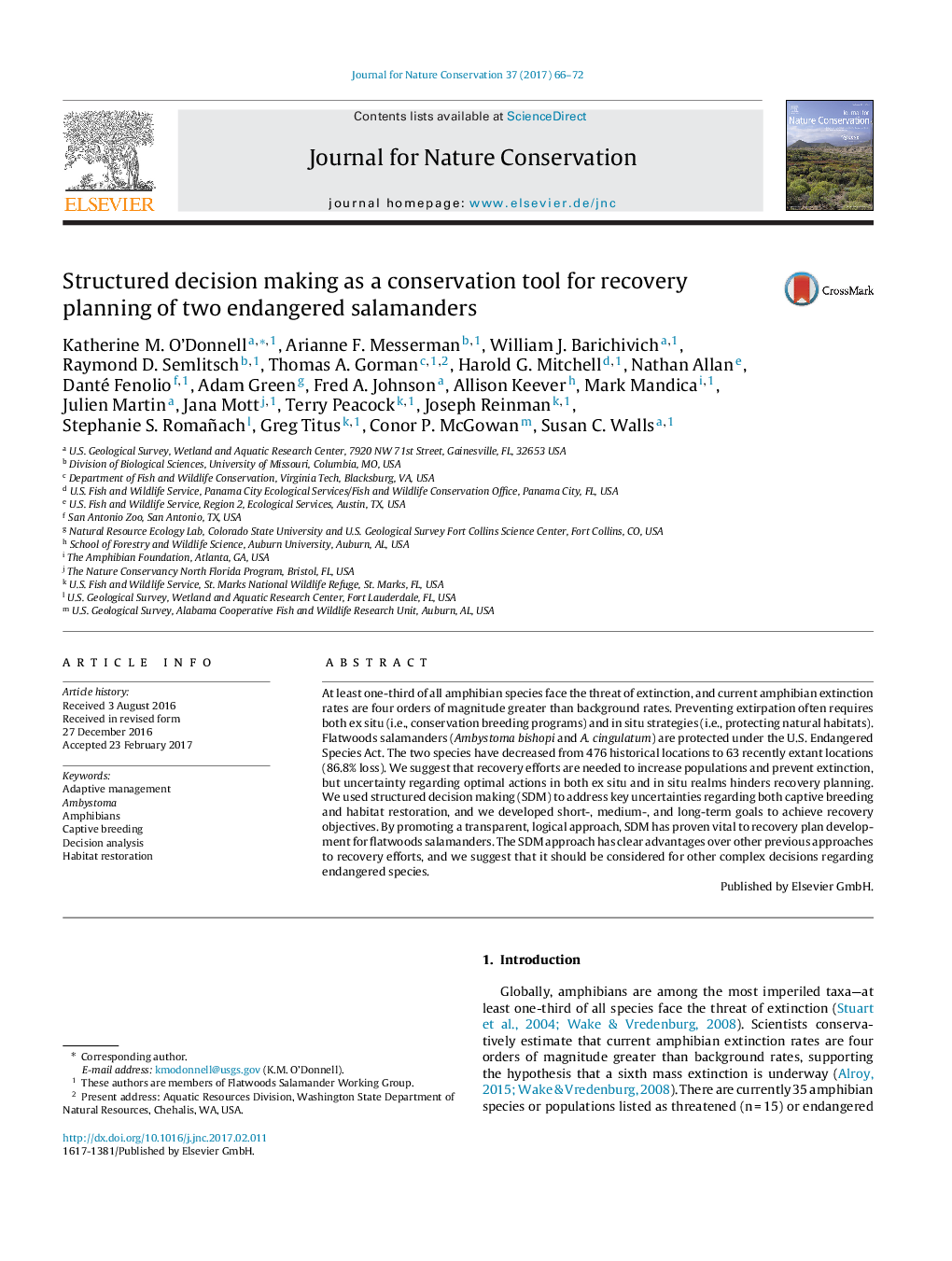| Article ID | Journal | Published Year | Pages | File Type |
|---|---|---|---|---|
| 5744832 | Journal for Nature Conservation | 2017 | 7 Pages |
At least one-third of all amphibian species face the threat of extinction, and current amphibian extinction rates are four orders of magnitude greater than background rates. Preventing extirpation often requires both ex situ (i.e., conservation breeding programs) and in situ strategies (i.e., protecting natural habitats). Flatwoods salamanders (Ambystoma bishopi and A. cingulatum) are protected under the U.S. Endangered Species Act. The two species have decreased from 476 historical locations to 63 recently extant locations (86.8% loss). We suggest that recovery efforts are needed to increase populations and prevent extinction, but uncertainty regarding optimal actions in both ex situ and in situ realms hinders recovery planning. We used structured decision making (SDM) to address key uncertainties regarding both captive breeding and habitat restoration, and we developed short-, medium-, and long-term goals to achieve recovery objectives. By promoting a transparent, logical approach, SDM has proven vital to recovery plan development for flatwoods salamanders. The SDM approach has clear advantages over other previous approaches to recovery efforts, and we suggest that it should be considered for other complex decisions regarding endangered species.
